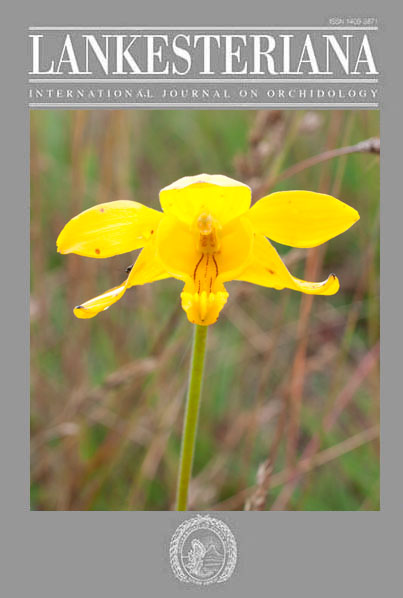The endangered Daffodil Orchid <i>Ipsea speciosa</i> (Orchidaceae): Population status in unprotected areas in the Central Highlands, Sri Lanka
DOI:
https://doi.org/10.15517/lank.v20i1.41434Abstract
The Daffodil Orchid, Ipsea speciosa, is a rare endemic terrestrial orchid species found in the highland grasslands of Sri Lanka. Due to the restricted distribution range, this species is considered as an endangered taxon. This study aimed to assess the present state of I. speciosa populations outside of protected areas. During field investigations of nine selected grasslands, the abundance of I speciosa and accompanying plant species composition was determined. The abundance of I. speciosa varied from 2 to 23 flowering plants per site. Species composition in study sites consisted of 41 plant taxa that included 12 invasive species. Habitat deterioration, intentional burning, clearing of vegetation, and spread of invasive alien plant species were found to be the most significant threats to highland grasslands and the orchid. During the survey, we observed the rapid spreading of invasive species in most of the sites which suggests that the terrestrial orchid population could shrink further. Apart from intentional burning, other serious threats to the orchids are various anthropogenic activities such as illegal collection for medicinal purposes and establishing timber plantations that negatively impact native grassland flora including terrestrial orchids. Our results suggest that a continuous monitoring program for I. speciosa should be initiated. Additionally, monitoring of potentially adverse anthropogenic activities is considered to be vital for the conservation of valuable grasslands and native flora of Sri Lanka.
Key worDS: Epidendroideae, grasslands, invasive species, native flora, terrestrial orchids, threatened species
Downloads

Downloads
Published
How to Cite
Issue
Section
License
According to the Open Access policy promoted by the University of Costa Rica, all the papers published by Lankesteriana are licensed under the Creative Commons copyright and can be downloaded free of charge. The journal holds copyright and publishing rights under the CC BY-NC-ND 3.0 CR license.
Before the publication of the materials submitted by the author(s) in LANKESTERIANA, the author(s) hereby assign all rights in the article to the Lankester Botanical Garden.




